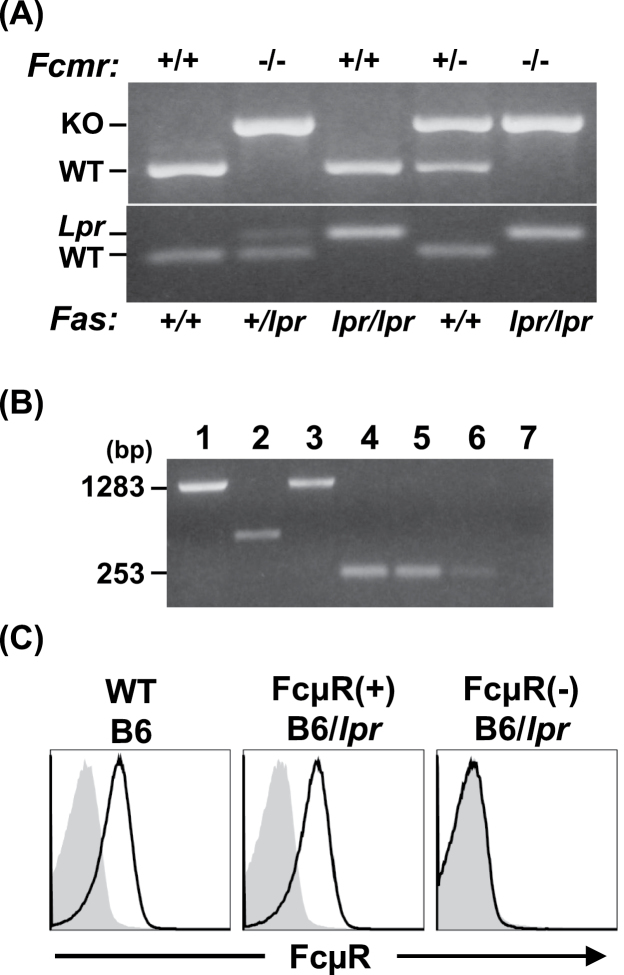Fig. 1.
Lack of FcμR expression in Fcmr −/− B6/lpr mice. (A) Genotyping of offspring of Fcmr −/− C57BL/6 and B6.MRL Fas lpr/lpr mice. Tail DNA was subjected to genomic PCR using diagnostic sets of primers to determine the genotype of Fcmr and Fas in individual mice. Representative genotyping data are shown. The normal (WT) and targeted (KO) alleles of Fcmr give rise to 570 and 730-bp PCR products, respectively. The WT and mutant (Lpr) alleles of Fas are 179 and 217bp, respectively. (B) RT–PCR analysis. Total RNAs isolated from spleen of Fcmr +/+ (lanes 1 and 4) or Fcmr −/− (lanes 2 and 5) B6/lpr mice and control WT mice (lanes 3 and 6) were subjected to RT–PCR and amplified products of FcμR (lanes 1–3) and control PIR-A (lanes 4–6) were electrophoresed in 0.7% agarose and stained with ethidium bromide. Lane 7 is a PCR control without a first-strand cDNA template. Note the lack of full-length FcμR transcripts (1283bp) in Fcmr −/− B6/lpr mice and presence of PIR-A transcripts (253bp). (C) Flow cytometric analysis of cell surface FcμR. Splenocytes from the indicated mice were first incubated with FcγR-blocking mAbs and then with biotinylated, anti-FcμR (lines) or isotype-matched control mAb (shaded) and FITC-anti-CD19 mAb. The bound biotinylated mAbs were detected by addition of PE-streptavidin. CD19+ B cells were gated and examined for their expression of FcμR.

